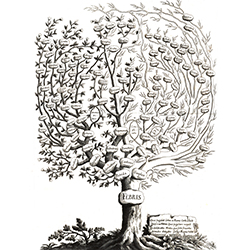
Fear of Infection and Situated Practices: the Wetlands of Veneto
Andrea Bagnato
Landscape scholarship 2020/2021
Subject area Theories and policies for landscape
tutors: Simonetta Zanon, head of Landscape projects area; Luigi Latini, chairman of the Scientific Committee of Fondazione Benetton
The project begins from the history of malaria – a disease intimately related to ecological balances, which was present until recently in many parts of Italy – by zooming in on the Veneto plain between the Sile and Tagliamento rivers. The research studiedthe forms and practices of rural coexistence with “infected” landscapes such as ponds and marshes, and their disappearance followingprocesses of enclosure and reclamation. It also reconstructed the historical evolution of notions of hygiene and infection, and their deployment onto the landscape. The methodology combines cross-disciplinary bibliographic research with cartographic research, site observations, and conversations with scholars from the relevant fields. The outcomes show that – in spite of their depiction as empty places – wetlands were complex territories, with a high level of economic productivity and anthropic intervention. Further, the research takes a critical standpoint of the ideological underpinnings and ecological consequences of land reclamation. By proposing multiple original perspectives to read and re-imagine infected landscapes, the project seeks to highlight the relevance of Veneto in the current debate on the role of the commons and wetlands in the fight against global warming.
Andrea Bagnato (1986) is an architect and researcher. He studied at TU Delft and at the Centre for Research Architecture, Goldsmiths College. In 2014 he initiated the long-term research project Terra Infecta, which studies the nexus between epidemiology, architecture, and landscape. The research was funded by the Graham Foundation and other international organisations. It has been presented in lectures and conferences internationally, including at the Royal College of Art, Princeton, Cambridge, and Carnegie Mellon universities. Among his books are A Moving Border: Alpine Cartographies of Climate Change (Columbia University Press / ZKM Karlsruhe, 2018) and Rights of Future Generations (Hatje Cantz, 2019). In parallel to his research practice, Andrea has worked as head of publications for the Sharjah Architecture Triennial, and teaches at WDKA in Rotterdam and the Architectural Association in London.
Dida foto
A classification of fevers, both malarial and not, according to 18th-century physician Francesco Torti. The figurative use of the tree as a diagram suggests a nexus between infection and the landscape. Published in Francesco Torti, Therapeutice specialis ad febres periodicas perniciosas(1756).
